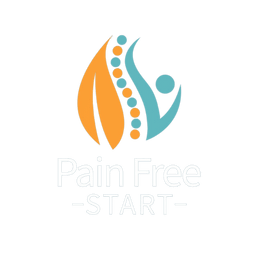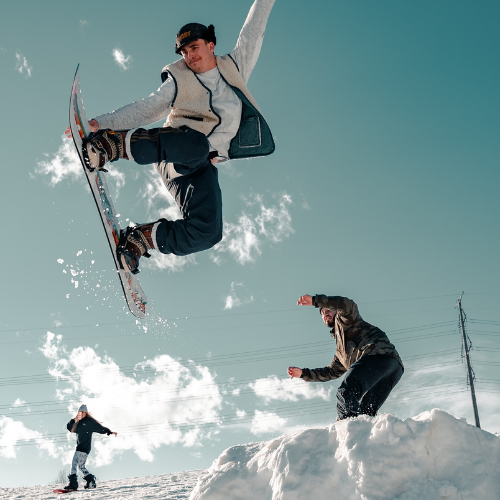It’s that time of year again — snowboards out, slopes calling. Snowboarding is a fantastic winter sport that people of all ages can enjoy. But like any physical activity, especially one we tend to do only once a year, it can bring on challenges — especially if you’re dealing with foot pain.
Plantar fascia pain is commonly experienced by snowboarders. It affects the connective tissue on the bottom of the foot and can quickly take the fun out of your trip. In this blog, we’ll cover what plantar fascia pain is, what causes it in snowboarders, and most importantly, how to manage it so you can get back to enjoying the snow.
What Is Plantar Fascia Pain?
The plantar fascia is a thick band of connective tissue that runs along the bottom of your foot, connecting your heel to your toes. It acts as a shock absorber and supports your arch.
When overstrained, this tissue can become irritated, inflamed, or unhealthy, resulting in pain — typically near the heel. While it’s often associated with runners and jumpers, it’s also common among snowboarders due to the strain placed on the foot during the sport.
Why Snowboarding Can Cause Plantar Fascia Pain
Plantar fascia pain (commonly known in the past as plantar fasciitis) is often caused by repetitive stress. In snowboarding, that stress comes from:
- Foot flexion and extension during jumps and tricks
- Repetitive landings on a rigid board surface
- Extended sessions on the slopes without proper recovery
Other contributing factors include:
- Poor footwear: Snowboard boots that lack proper arch support
- Tight or weak calf muscles: These can pull on the fascia, increasing tension or if weak make the plantar fascia work harder.
- Overload: Spending long periods on the board without preparation or breaks
Symptoms of Plantar Fascia Pain in Snowboarders
If you’re wondering whether your foot pain is related to plantar fascia strain, here are common symptoms to look out for:
- Pain in the heel or arch of the foot, especially in the morning
- Pain after periods of rest or inactivity
- Stiffness in the foot.
- Tenderness on the underside of the foot
- Swelling or inflammation
Still Unsure?
TOP TIP – Join my FREE Masterclass – together we assess your foot. Look at what has caused this problem and how to resolve it. Click to learn more or enrol.

6 Tips to Manage Plantar Fascia Pain While Snowboarding
Snowboarders don’t need to miss out — here are practical ways to manage and reduce symptoms of plantar fascia pain.
1. Wear Proper Snowboard Boots
Choose snowboard boots that provide good arch support and adequate cushioning. If your current boots don’t offer this, consider adding supportive innersoles designed for plantar fascia relief.
2. Stretch Before and After Snowboarding
Stretching your calves and the bottom of your feet can help reduce tension on the plantar fascia. This is essential before heading out and after a day on the slopes.
3. Use Ice Therapy
Apply ice to the bottom of your foot for 15–20 minutes, up to three times a day. This helps reduce inflammation and eases pain, particularly after activity.
4. Manage Your Load
Balance is key — too much rest can make the fascia less healthy, but too much strain can worsen symptoms. It’s about managing your load correctly. You may need to take short breaks from snowboarding or reduce your time on the slopes temporarily.
5. Address Biomechanical Issues
Poor lower limb alignment can increase stress on the plantar fascia. Often, the root cause lies in core and glute weakness. My Plantar Fascia Pain Program includes a full biomechanical assessment and exercises to correct alignment and support long-term relief. We also assess and advice on foot position which can contribute towards this annoying problem.
6. Identify and Correct Risk Factors
Your job, hobbies, footwear, or even your weight could be making your plantar fascia pain worse or more likely to recur. Identifying these risk factors and making small changes can be the difference between temporary relief and lasting recovery.
TOP TIP – I look at this in greater detail as well as assessing your foot and looking at how to resolve it in my FREE Masterclass, Click to learn more.
Ready to Fix It for Good?
This is a stubborn problem — but when you take the right steps at the right time, it’s very treatable. My Plantar Fascia Pain Program is designed to walk you through the process of recovery, from pain relief to strengthening and beyond.
You’ll learn:
- The best exercises
- Which innersoles actually help
- How to modify your activities
- How to return to full movement without triggering pain again
TOP TIP – Great first step – Join me on my FREE Masterclass. Assessing your foot, identifying causes and looking at resolutions to this painful problem.
Final Thoughts
Plantar fascia pain doesn’t have to ruin your time on the slopes. Now that you know the causes and what to do, you can take action and enjoy snowboarding without worrying about your feet.
Get started with my Plantar Fascia Pain Program today — and get back on your board, pain-free.
Take care, Helen
Helen Manders BSc (Hons) MCSP HCPC
Chartered Physiotherapist
Treating Plantar Fascia Pain Since 2001




